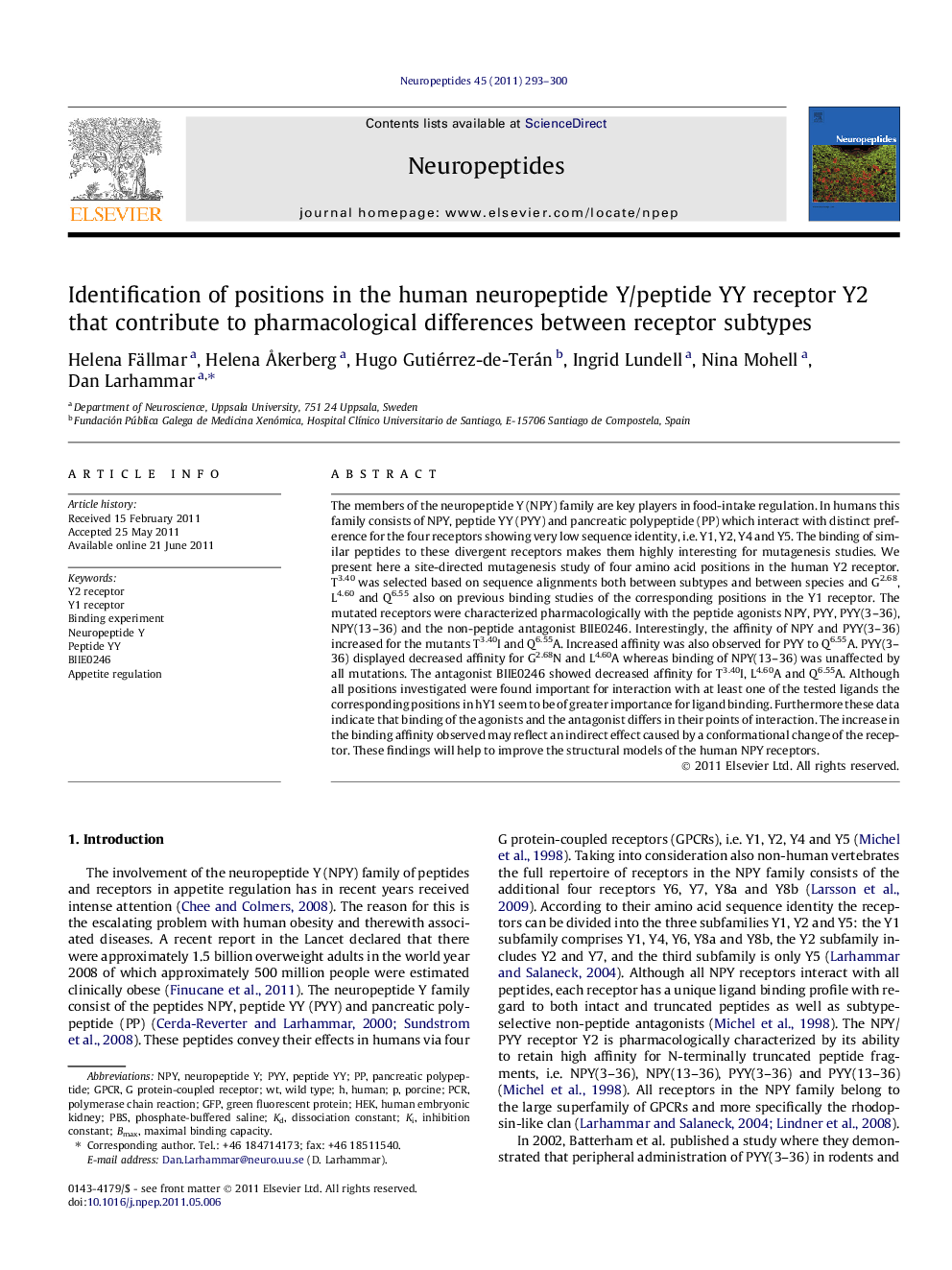| کد مقاله | کد نشریه | سال انتشار | مقاله انگلیسی | نسخه تمام متن |
|---|---|---|---|---|
| 2808359 | 1157753 | 2011 | 8 صفحه PDF | دانلود رایگان |

The members of the neuropeptide Y (NPY) family are key players in food-intake regulation. In humans this family consists of NPY, peptide YY (PYY) and pancreatic polypeptide (PP) which interact with distinct preference for the four receptors showing very low sequence identity, i.e. Y1, Y2, Y4 and Y5. The binding of similar peptides to these divergent receptors makes them highly interesting for mutagenesis studies. We present here a site-directed mutagenesis study of four amino acid positions in the human Y2 receptor. T3.40 was selected based on sequence alignments both between subtypes and between species and G2.68, L4.60 and Q6.55 also on previous binding studies of the corresponding positions in the Y1 receptor. The mutated receptors were characterized pharmacologically with the peptide agonists NPY, PYY, PYY(3–36), NPY(13–36) and the non-peptide antagonist BIIE0246. Interestingly, the affinity of NPY and PYY(3–36) increased for the mutants T3.40I and Q6.55A. Increased affinity was also observed for PYY to Q6.55A. PYY(3–36) displayed decreased affinity for G2.68N and L4.60A whereas binding of NPY(13–36) was unaffected by all mutations. The antagonist BIIE0246 showed decreased affinity for T3.40I, L4.60A and Q6.55A. Although all positions investigated were found important for interaction with at least one of the tested ligands the corresponding positions in hY1 seem to be of greater importance for ligand binding. Furthermore these data indicate that binding of the agonists and the antagonist differs in their points of interaction. The increase in the binding affinity observed may reflect an indirect effect caused by a conformational change of the receptor. These findings will help to improve the structural models of the human NPY receptors.
Journal: Neuropeptides - Volume 45, Issue 4, August 2011, Pages 293–300